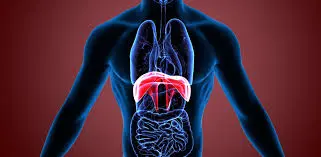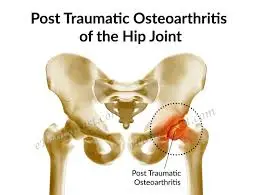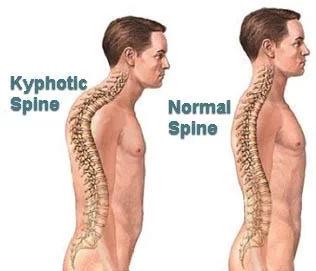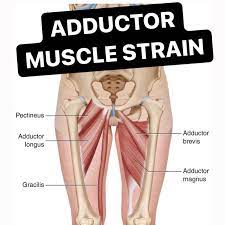Diaphragm Muscle Tightness
Table of Contents
What is Diaphragm Muscle Tightness?
Diaphragm Muscle Tightness is a condition where Diaphragm loses the flexibility to stretch fully mainly due to long bedridden such as a coma condition, age-related weakness, or any chest injury.
Involuntary contractions of the muscular band separating the upper abdomen and chest are known as diaphragm spasms. They typically don’t represent a severe health danger, although they can be uncomfortable.
When you exhale while experiencing a diaphragm muscular spasm, the diaphragm does not relax and curves back up. An abdominal cramp is the result of it tightening and contracting. Strenuous activity may cause a “side stitch,” as this type of spasm is commonly referred to. Typically, things go better with rest.
What is a Diaphragm?
It is large, domed-shaped, and located just behind the lungs, near to your lower to middle rib cage. During inhalation, your diaphragm contracts and helps your lungs expand, enabling you to take in air. When you exhale, it moves back to where it usually is.
You can breathe in and out thanks to a muscle called the diaphragm. This little muscle, which resembles a dome, is located behind your heart and lungs. In addition to helping you breathe, the diaphragm also causes pressure to build up inside your abdomen. This assists with other crucial tasks like eliminating your faeces (poop) and urine (pee). By applying pressure to your oesophagus (the food tube in your throat), it helps to avoid acid reflux. Your oesophagus, as well as a number of nerves and blood vessels, travel via openings in the diaphragm.
Numerous circumstances may have an effect on the diaphragm’s ability to operate. The most common diseases are hernias and nerve damage from accidents or surgical procedures. The diaphragm might deteriorate due to neuromuscular conditions like amyotrophic lateral sclerosis (ALS). Breathing difficulties, heartburn, and chest and abdominal discomfort can all be brought on by these illnesses.
What serves as a Diaphragm?
In the respiratory system, the diaphragm is essential. Your diaphragm flattens and tightens when you inhale, sliding down into your belly. This movement generates a vacuum in your chest, causing it to expand (get larger) and pull in the air. Your diaphragm relaxes and bends back up when you exhale as your lungs force the air out.
The diaphragm is home to many blood arteries, nerves, and soft tissues. These consist of the:
- A large artery called the aorta transports blood from the heart to the rest of the body.
- The oesophagus is a tube that links the stomach to the throat. The oesophagus transports food and drinks to the stomach.
- A vein that leads to your heart is called the inferior vena cava.
- The phrenic nerve, which controls the diaphragm’s motion.
- The thoracic duct, a tube that carries the body fluid known as lymph, is a part of the lymphatic system.
- The vagus nerve, which has several important roles to play, helps to control the digestive system.
What Makes the Diaphragm Tight?
If you enjoy exercising, your diaphragm could feel constricted. You get a severe side discomfort that makes breathing difficult at this point. The problem is referred to as a diaphragm spasm. Take a break till the tightness passes to deal with it.
You could start breathing from your chest when you’re worried like most individuals do. Your diaphragm experiences some strain as a result, which causes your neck and shoulder muscles to contract and might result in headaches.
Pregnancy, anxiety, a hiatal hernia, accident-related injuries, issues with your bladder, and nerve damage are some more factors.
Although doctors do not yet know what causes diaphragm spasms, they frequently relate them to:
- Spinal and chest tumours Encephalitis, an inflammation of the brain
- Stroke
- Spasms in other breathing muscles
- Diaphragm spasms can have a variety of reasons.
Even though the symptoms might be unpleasant, they normally go away in a short period of time.
Additional root causes include:
Injury: During a contact sport like boxing or rugby, for instance, a quick physical strike to the chest or abdomen might result in a spasm.
Stress: For some persons, stress causes diaphragmatic spasms or aggravates their symptoms.
Exercise: Exercising might make your stomach “stitch” or cramp. This could happen when someone exerts themselves excessively or struggles to complete their warm-ups. A stitch’s added pressure can occasionally cause a diaphragm spasm.
Abdominal hernia:
When a hiatal hernia occurs, a portion of the stomach pushes up into the chest. Age, trauma, or recent surgery can weaken the diaphragm’s muscular tissue, which can lead to hiatal hernias.
A portion of the stomach pushes through an expanded hiatal hole in the diaphragm when a hiatal hernia forms. This can cause a spasm of the diaphragm.
A hernia can be slight or severe, and any extra symptoms will depend on how severe the hernia is. Because they can harm the stomach, produce bleeding, or obstruct breathing, the most severe instances demand emergency medical treatment.
Temporary paralysis:
The diaphragm can become momentarily paralyzed by a violent blow to the abdomen. Breathing may become quite difficult as a result of this. If they can’t breathe, a person may frequently fear or feel frightened, which might make their symptoms worse.
However, the paralysis will soon end, and the person will likely be able to breathe normally once more.
Phrenic nerve discomfort:
The diaphragm muscle is moved under the direction of the phrenic nerve. Hiccups, breathing problems, and spasms in the diaphragm can all be brought on by irritation, damage, or inflammation to this nerve.
The phrenic nerve can get irritated by a number of things, such as:
- Simultaneously swallowing and breathing air in
- Experiences overeating or eating spicy food
- Physical injury
- Surgical complications
- Cancer
- Noncancerous growths
- Autoimmune or neurological conditions
- Infection
Symptoms of Diaphragm Muscle Spasm:
The severity of the symptoms will depend on the underlying reason. An individual may feel a diaphragm spasm in a variety of ways. A tight diaphragm might result from:
- Tightness or discomfort in the chest
- Chest pain
- Breathing issues when moving or while submerged in water or while standing or walking
- Having trouble breathing
- Abdomen pain
- Heart palpitations
- Insufficient blood oxygen causes sleep problems.
- When coughing and sneezing, the sides hurt
- Coughing continuously
- Sore shoulders and neck muscles
Other symptoms might coexist with the diaphragm spasm, depending on what caused it. These may consist of:
- Hiccups
- Back pain
- Indigestion
- Nausea
- Vomiting
- Having trouble swallowing
- Diaphragm numbness
- Ongoing coughing
- The severity of these symptoms might vary depending on the underlying reason.
Diagnosis:
Due to similarities, the signs of diaphragm spasms might be mistaken for those of a cardiac or digestive issue. In most situations, symptoms go away on their own within a few minutes without the need for a medical diagnosis.
However, it is crucial for a person to seek medical help if they have regular diaphragm spasms without a clear explanation.
An X-ray, blood test, CT scan, MRI, endoscopy, or manometry may be used by the doctor to assist in the diagnosis if they feel that an underlying medical problem is the source of the spasms.
Diaphragm spasm prevention:
Depending on the underlying reason, there are several treatments for diaphragm spasms.
Diaphragm spasms brought on by a rapid hit could be uncomfortable, but the symptoms usually pass quickly, necessitating no treatment. While symptoms last, it’s critical to rest and focus on keeping a normal breathing rhythm.
Treatment for a Tight Diaphragm
Pain is manageable unless you have a burst diaphragm or injure yourself through it.
Utilize appropriate breathing methods.
Deep belly breathing should provide you with some comfort if your diaphragm tightness is the result of working exercise. Abdomen breathing is the practice of breathing from your abdomen rather than your chest.
Deep breathing makes your diaphragm stronger, which reduces oxygen demand and needs less effort. Put cushions underneath your knees to lift them while you lie on your back. To feel your diaphragm, place one hand on your chest and the other on your lower ribs.
Slowly inhale so that your tummy rises and the hand on your chest is as still as you can manage. Once you have mastered diaphragmatic breathing in the prone position, try it in the upright position.
Evidence shows that regulated breathing exercises help reduce diaphragm spasms.
How to do it:
- On the ground or a bed, lie flat on your back.
- Place one cushion behind your head and one beneath your knees while bending your knees slightly.
- Put one hand on the area of your upper heart closest to your chest, and the other on the area of your upper abdomen behind the ribs.
- Inhale slowly through your nose. Feel the movement of your stomach against your hand.
- Exhale through your mouth with pursed lips while you contract your abdominal muscles, causing your belly to tuck in.
Medical treatment:
One of the following therapies could be suggested by a doctor if the symptoms are severe:
Anti-epileptic drugs
Anticonvulsant drugs
Antipsychotic drugs
Techniques to try to regulate the diaphragm’s movement, such a surgery called “diaphragm pacer stimulation” to stop the diaphragm from moving,
Different remedies will be needed for each of the following causes:
- Exercise: The majority of diaphragm spasms caused by exercise will also go away on their own without therapy. Stretching or applying pressure to the nearby muscles might be helpful when the spasms are chronic.
For instance, you can ease pain by using your fingers to gently press into the afflicted muscle. Stretching the chest muscles by holding one hand over the head might also be beneficial.
- Hernia hiatal: Depending on how severe they are, doctors can treat hiatal hernias in various methods. Eating smaller, more frequent meals or using gastroesophageal reflux disease medication may be helpful in circumstances where symptoms are mild.
In more severe situations, especially if the hernia leads to problems, surgery can be required.
- Phrenic nerve sensitivity: The best method to get your breathing back to normal is to address the issue that’s causing your phrenic nerve discomfort. The course of therapy will depend on the reason.
To alleviate phrenic nerve sensitivity:
A breathing pacemaker, which takes over the role of communicating with the diaphragm, can treat this problem. The pacemaker triggers the electrodes, which are positioned around the nerve and cause the diaphragm to contract.
If just one nerve is injured, you’ll get one implant; if both are, you’ll get two.
- Side stretch: Place your hand on the back of your head while raising the arm that corresponds to the side of the discomfort. To help the knots relax, hold them for 30 to 60 seconds. In fact, you can keep working out while holding the stretch.
In addition, you might slowly bend backward and forward while applying pressure with your palm to the painful area. Perform core stretches, such as the one mentioned above, before a workout to prevent side stitches.
Surgery:
Surgery may be required in specific situations. Typically, a tiny incision in the chest or belly wall is used for the procedure. Smaller meals, avoiding foods that might cause heartburn, abstaining from alcohol, decreasing weight, and raising the head of your bed are some lifestyle changes and natural treatments for heartburn.
Other therapies:
- Devices: A vibrating tool could also help to loosen your diaphragm. This object is put over your diaphragm and vibrates to ease tension and assist muscle relaxation. Either laying down or standing can be used for this. If you want to use this method, be sure to get the advice of a licensed healthcare provider to make sure you are utilizing the device appropriately.
- Massage: A constricted diaphragm can also be made more flexible by massage. The increased blood flow and tension-reducing effects of massage can help the diaphragm relax. It’s crucial to choose a licensed massage therapist with knowledge of the diaphragm muscles. You may also massage your diaphragm muscle using a foam roller.
- Stretching: Your diaphragm may be made more flexible by stretching. Diaphragmatic stretching is a method that concentrates on the intercostal and abdominal muscles, which govern your diaphragm. Lay on your back on a flat surface and bend your knees to perform this stretch. Consider a few slow, deep breaths while concentrating on calming your body. Put one hand on your upper chest and the other on the area of your abdomen that is closest to your ribs.
Change a lifestyle:
The reason for diaphragm discomfort determines how to treat it. If it’s from exercising, you’ll feel better as soon as you get some rest. If trauma is the cause, relief will take longer to arrive. The use of medication will be beneficial for treating conditions like hiatal hernias. In the end, altering your way of life could be the greatest treatment.
Avoiding foods that give you heartburn, eating fewer quantities, exercising, correcting your posture, and decreasing weight if you’re obese are all examples of this. Before working out, always stretch and warm up.
Diaphragm tightness and sore neck and shoulders can be lessened by learning to manage stress by juggling work and home obligations, forming supportive relationships, practicing yoga, and meditation, and connecting with others.
Outcomes:
Most diaphragm spasms are short-lived and can disappear in a few minutes. To alleviate chronic symptoms, particular body stretches, medicines, and lifestyle modifications may be helpful.
A doctor can assist in creating a treatment plan for a patient whose diaphragm spasms are brought on by a problem that has to be treated, such as a hiatal hernia, phrenic nerve irritation, or diaphragmatic flutter.
Depending on the reason, the prognosis for diaphragm spasms varies greatly. But in the majority of situations, either at-home remedies or medicinal remedies can alleviate the symptoms.
Sometimes the spasms are brought on by typical overexertion and are readily treated. In other situations, it may be necessary to treat an underlying ailment, and once the condition is under control, the spasm will go away.
Doctors are more equipped than ever to identify the cause of a diaphragm spasm and develop a successful treatment strategy thanks to modern technology and imaging tools.
FAQs:
Other contributing factors include pregnancy, anxiety, hiatal hernia, accident trauma, bladder issues, and nerve injury.
Stress and/or worry are among the factors that cause this muscle to become tight. We frequently go through a lot of stuff on a daily basis due to our hectic lives. Our brains are unable to distinguish between a tiger pursuing you and the deadline for your job assignment.
The diaphragm is a crucial muscle in your body, and if it is tight or has trigger points, it can cause a number of symptoms and illnesses. However, a self-massage can help to reduce these tensions and trigger points.
Shortness of breath when lying flat, when walking, or when submerged in water up to the lower chest are signs of substantial, typically bilateral diaphragm weakening or paralysis. Reduced blood oxygen levels and sleep-disordered breathing can result from bilateral diaphragm paralysis.
This particular muscle is in charge of 80% of your breathing. The primary job of this muscle is to maintain respiration, which can assist your body in adjusting to workout intensity increases. You may conduct activities to strengthen your diaphragm and improve your total aerobic capacity, just like you can for your other muscles.





